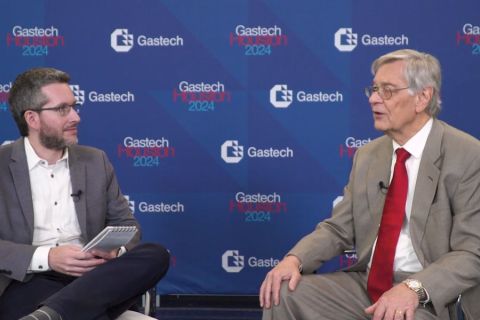
Oil prices have crept back into the $50s, and the land rig count is rising. According to Bob Newhouse, an industry consultant and former chief learning officer for Noble Drilling Services Inc., service companies and drilling contractors are adding to employee rolls. At year-end 2016, for example, Halliburton announced it would hire 200 workers in the Permian Basin alone.
E&Ps will likely rely on contract hires for now.
It remains to be seen how difficult it will be for oil and gas companies to hire skilled workers, given the level of distrust that accompanies a downturn and which can linger for years.
The 1980s crash took out an oil and gas generation, leaving a void in the shale boom decades later. Since 2014, more than 200,000 jobs have been lost in the industry, many of them held by older, more experienced employees who, this time around, have called it quits--for good.
At the International Association of Drilling Contractors’ (IADC) Onshore Drilling Conference in May 2016 in Houston, a panel discussion touched on whether drilling contractors would be ready to staff up when oil prices improved. Two analysts predicted the industry would need to put 1,000 to 1,200 rigs back to work, but stated they didn’t think the companies could do it because they wouldn’t have the people.
When the question was put to a panel of industry leaders, “you could have heard a pin drop,” Newhouse said. “A few talked about how they’ve attempted to stay in touch--sending letters, inviting laid-off employees into the office--but nobody could really say how damaged the workforce has been by this downturn.”
As a result, Newhouse contacted Christiane Spitzmuller, principal investigator with the Center for Applied Psychological Research at the University of Houston, to ask if it were possible to gather data about workforce viability and the effect of cutbacks. The conversation led to a UH study of oil and gas workers laid off over the past two years; preliminary results were released in early January.
Participants were recruited through industry associations and networking websites. They had to be at least 18 years old and have lost an industry job in the past two years. The 720 people who responded had a median age of 53. Eighty-seven percent were white, and 89% were male. More than 73% held a college degree.
Only about 13% had found new jobs in the industry, while 25% had found work in other fields. Sixty-two percent remained unemployed. And of those who have been rehired, 65% reported working outside the oil and gas field.
Nearly three-fourths said that they were “anxious” about the industry’s future. Two-thirds said they felt their former employer’s discharge procedures were biased and didn’t allow them to share their view; 55% said they were considering leaving the industry within the next year.
Undoubtedly, negative outlooks could turn more positive in the event of a $100,000-per year job offer. Oil and gas companies may be counting on the allure of high-paying jobs. But at a certain point, a gap in skills and experience may be felt if the upturn continues.
Typically, the first tranche of layoffs takes out the bottom level and shifts more experienced workers downward. In the next tranche, they get bumped back up and lower positions must be filled once more.
“No one knows where the buffer zone is where it will get harder to hire. It could take six to eight months of dipping into the existing pool before bringing in new people,” Newhouse said.
Companies also face the task of accelerating the career paths of younger employees into leadership positions. And, it may be harder to attract the best and brightest and convince them that oil and gas is a viable career path in the long term, Newhouse said.
“The good news is, we’ve introduced so much technology over the past 15 years, that if you’re an engineer, you can work on some really incredible stuff. The software side is so important. Companies that can tell those stories can still attract people.”
The UH researchers recommend better internal communication about how downsizing decisions are made and how people who are cut will be treated. The findings suggest human resources and management practices significantly impact employees’ perceptions of the industry, which directly affects the resiliency of the workforce.
Recommended Reading
Venture Global Taking Adequate Steps in Calcasieu Pass Construction, FERC Says
2024-10-01 - The Calcasieu Pass LNG plant’s foundational customers have turned to legal auction due to the plant’s long commissioning time.
Trump Taps Ex-Congressman Zeldin to Run Environmental Protection Agency
2024-11-11 - U.S. President-elect Donald Trump said on Nov. 11 he will appoint Republican former Congressman Lee Zeldin, who frequently voted against legislation on green issues, to run the Environmental Protection Agency.
Supreme Court Takes Up Clean Air Act Venue Fight
2024-10-21 - The high court’s justices will hear arguments if the EPA’s air pollution rules should be challenged in D.C. or in regional courts.
Q&A: Making Midstream’s Case in DC
2024-11-08 - GPA Midstream Association President and CEO Sarah Miller spoke with Oil and Gas Investor on working with the industry’s needs and defending the sector in Washington, D.C.
RBAC: Environmental Pressures Undercutting the Global Gas Network
2024-10-10 - RBAC founder and energy economist Robert Brooks worries that environmental goals and pressures have taken a front seat at the expense of affordable energy access to countries such as Africa.
Comments
Add new comment
This conversation is moderated according to Hart Energy community rules. Please read the rules before joining the discussion. If you’re experiencing any technical problems, please contact our customer care team.





